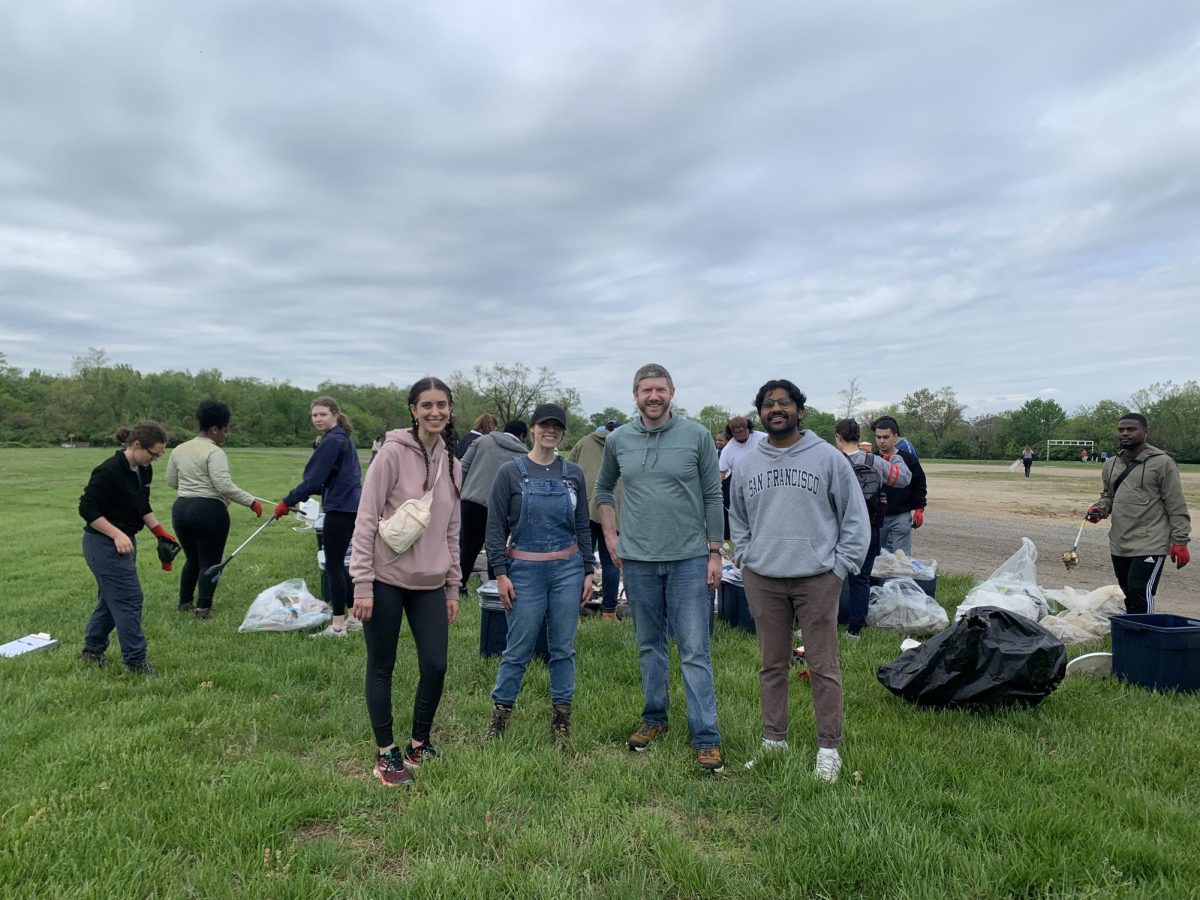
The Mind-Body Medicine Program, which launched 13 years ago in the Georgetown University Medical Center, has expanded to undergraduates over the past few years, catering students in the School of Nursing and Health Studies and the School of Foreign Service who experience stress.
“There is nothing that I am prouder of,” Georgetown University Medical Center professor Aviad Haramati said with a smile, recalling his role in the founding of the Mind-Body Medicine Program 13 years ago.
The program, built around a series of courses in GUMC, teaches self-care strategies of stress relief and mindfulness to help students navigate their academic challenges and maintain a lifelong sense of well-being.
In recent years, the program has expanded significantly. It formed in 2002 with with a five-year grant of $1.7 million grant the National Institutes of Health’s former National Center for Complementary and Alternative Medicine. Initially, it was offered through the Complementary and Alternative Medicine Masters Program in Physiology before spreading to the School of Nursing and Health Studies in 2007, the Georgetown University Law Center in 2008 and the School of Foreign Service in 2011.
Haramati felt that the stress culture at Georgetown required an educational response.
“We wanted … to see if we could help students become self aware, manage stress, learn about themselves and about each other and foster a community that was more empathic,” Haramati said. “That was our goal.”
Faculty members volunteer to become certified by the School of Medicine to teach the course and receive no payment for their teaching.
Associate SFS Dean Anthony Pirrotti, who teaches an undergraduate mind-body medicine class, said faculty members benefit alongside their students.
“The people who lead the classes really enjoy doing it,” Pirrotti said. “I also think that we all feel like we learn something each week too and that’s what we get out of it.”
The program left the NHS in 2010, but any undergraduate student can enroll in a one-credit course called “Intro to Mind-Body Connection.” The course, typically capped at 10 students per section and graded on a pass or fail basis, introduces students to various types of meditation.
Techniques taught include breath meditation, guided imagery, journal writing and art exercises.
Founder and Program Director Nancy Harazduk said the mindfulness meditation skills imparted in the course could help students to cope with stress.
“[Mindfulness meditation is] focusing on one specific thing intentionally and non-judgmentally in the present moment,” Harazduk said. “One of the main reasons that we’re stressed is we regret the past, or we worry about the future, but if we can let that go, and stay in the present, the stress is lessened.”
According to Harazduk, students in the program form close bonds with the other members of their groups.
“They share things that are true to their souls with others so they become intimately connected,” Harazduk said. “They help each other, and I think that a vital part of the group is connecting with other people.”
Students who took the course in the School of Medicine echoed this sentiment.
“I can’t possibly express in words how beneficial [being in a group] is,” Sadie Canter (MED ’18) said. “It helps you to put things in perspective.”
Kevin Diasti (MED ’18) said that the mindfulness emphasized in the program could be beneficial for anyone.
“I think a good attention to centeredness to yourself, to the person that you are, for your mental health, is integral for everyone in our society,” Diasti said.
According to a 2015 survey by the American College Health Association, 86.7 percent of college students reported feeling overwhelmed within the past 12 months.
While Georgetown’s student stress data is kept confidential, Health Education Services Director Carol Day said Georgetown students report levels of stress that mirror national trends.
“There is a stress culture, and students tend to glorify being busy, which means they’re filling their lives with all kinds of things,” Day said. “I think that doing too much is the norm.”
Harazduk said the program aims to address this problem.
“It’s one way to help the students and the faculty reduce their stress and reduce their burnout,” Harazduk said.
In a recent student stress survey conducted by Reza Baghaee-Rezaee (NHS ’18), Emily Ko (NHS ’18) and Tracy Acheampong (NHS ’18), 167 subjects reported an average stress level of five out of 10 without pending exams and a stress level of eight with pending exams.
At the end of the survey, students were asked to comment on the stress culture at Georgetown.
“The stress atmosphere here is toxic,” one student wrote.
Kayleigh Hauri (COL ’16), who enrolled in the undergraduate mind-body medicine course last semester, said the pressure to succeed at Georgetown sometimes causes students to neglect their mental and physical health.
“I think that people push themselves really hard because they want to do well, but at the cost of their mental health or their own health in general,” Hauri said.
Director of Georgetown’s Counseling and Psychiatric Service Philip Meilman said mindfulness can help students cope in the face of stress.
“The typical Georgetown student is highly talented and achievement-oriented. Sometimes, however, one can be so active that self care falls by the wayside,” Meilman wrote in an email to The Hoya. “Mindfulness and meditation enable a student to push the ‘pause’ button and do something very supportive of one’s own health and well-being.”
Pirrotti said he hopes that the program will expand further and continue to meet student demand.
“I think that there’s clearly a need for it — there’s clearly an interest,” Pirotti said. “The key is getting more faculty members who are interested in teaching it and in running it. I hope it does grow.”
Correction: An earlier version of this article incorrectly attributed a quote by Nancy Harazduk to Carol Day.




















